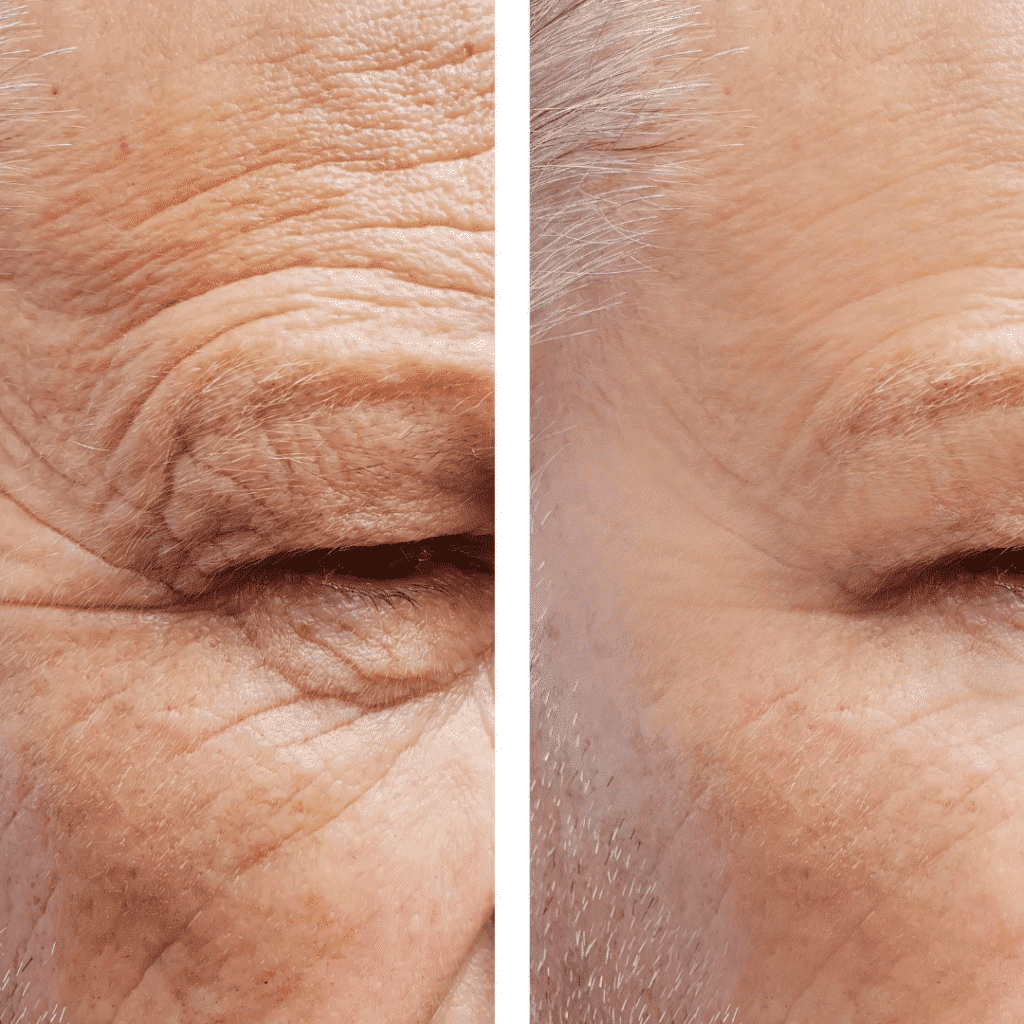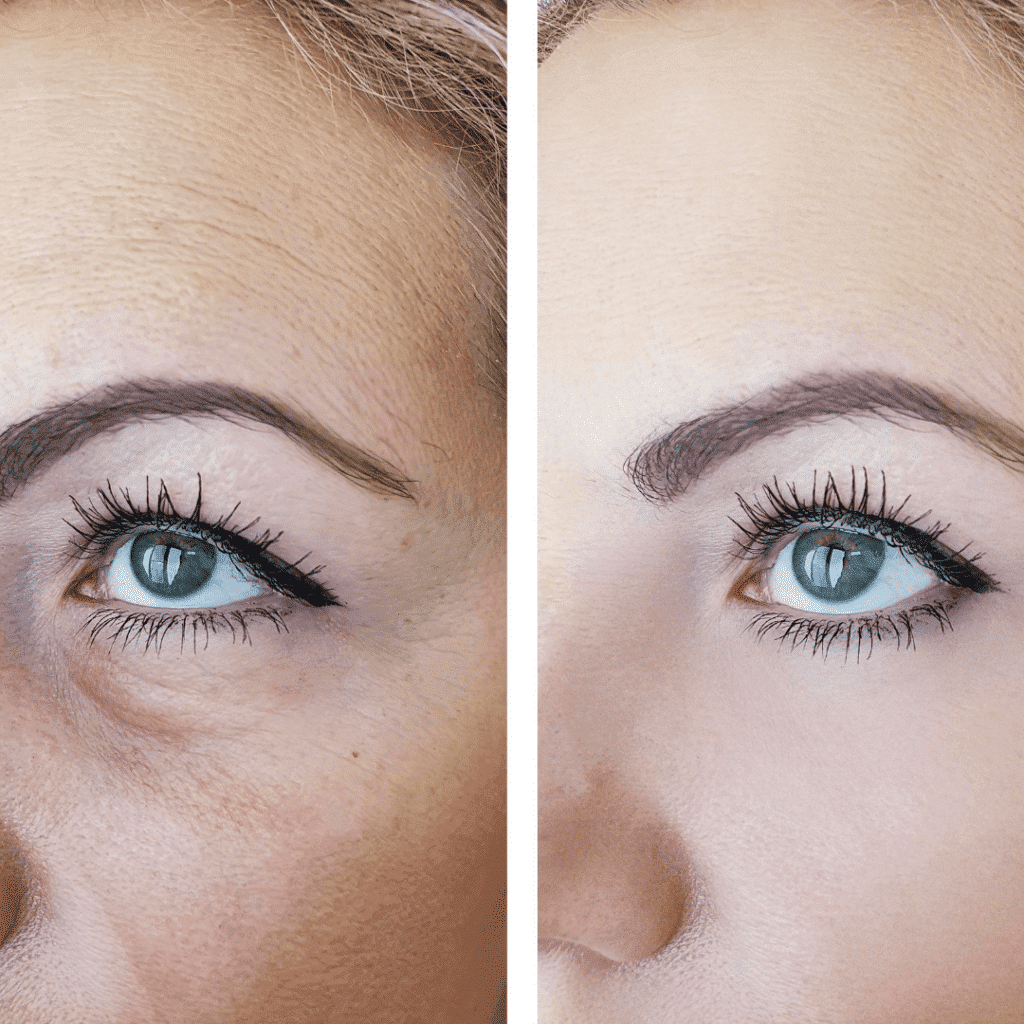Crow’s feet in Pasadena & Glendale, CA
What is Botox used for?
Wrinkles, as well as fine lines, are the first signs that we’re getting older, as well as there are a couple of alternatives we offer right here at Medical Weight Loss and Beauty in Pasadena, CA to aid you tame these signs of aging.
Neurotoxins, or muscle depressants such as Botox and Dysport, are injected strategically to relax specific muscles that are hyperactive and causing you wrinkles and fine lines. Botox is the number one aesthetic procedure in Los Angeles as well as also the world. Patients decide to get an injectable muscle depressant such as Botox or Dysport for a number of reasons. Botox contains a detoxified form of botulinum toxin type A, which is completely safe for use and injected underneath the skin into muscles that need to be paralyzed or weakened to prevent more severe wrinkles from forming.
Botox is the top non-surgical option to treat skin around your eyes
Considering that it was accepted for aesthetic usage in 2002, individuals have been seeking Botox injections to fix wrinkles, especially those around the temple and also eyes. If you’re beginning to see crow’s feet, Botox can shoo them away.
We usually inject Botox as well as fillers at the exact same treatment time, to maximize corresponding results. We offer free aesthetic examinations and also will allow you know if Botox and fillers are a good fit to help you moderate to severe crow’s feet or eye wrinkles.

How long does Botox usually last for crow’s feet and forehead wrinkles?
Every individual has differing results depending on their metabolic processing of the injected neurotoxins (Botox). The majority of individuals are able to process their Botox shots after around 3-4 months. Some people metabolize Botox faster than others, leaving them with Botox’s impacts for 2-3 months, while others have the impressive effects of Botox for up to 6 months.

Top medical spa offering injections for wrinkles near me
Botox injection is very risk-free in skilled hands. Being a paralytic agent, Botox will immobilize any type of muscular tissue with which it comes right into call. This allows us to treat sagging top eyelid using targetted injections or temple injections to treat wrinkles. Additional usages include treating drooping smiles crow’s feet or helping with crow’s feet. The result are short-term, and will permit function to return as the Botox is metabolized by the body. Dr. Kojian believes in injecting only as much as required for achieving the planned outcomes. This not only restricts complications yet makes these treatments a lot more affordable for patients.
Botox is primarily used to treat dynamic wrinkles—those caused by repetitive muscle movement. Common areas include:
- Forehead lines: Horizontal lines across the forehead.
- Glabellar lines (frown lines): Vertical “11” lines between the eyebrows.
- Crow’s feet: Lines radiating from the corners of the eyes.
- Bunny lines: Wrinkles on the bridge of the nose.
- Chin dimpling, lip lines, and neck bands (platysmal bands) can also be addressed with Botox.
Patients typically begin to see results within 3 to 5 days after injection. However, full results develop in 7 to 14 days. This delay allows the neurotoxin to fully block the communication between nerves and targeted muscles.
There is minimal to no downtime with Botox. Most patients return to their daily routine immediately. However, for best results:
- Avoid strenuous exercise for 24 hours.
- Stay upright for at least 4 hours post-treatment.
- Refrain from massaging or touching the treated area, which can cause the toxin to migrate.
To maintain results, Botox treatments are typically repeated every 3 to 4 months. With consistent use, some patients may notice they can extend treatments to every 5 or 6 months as muscles become trained to relax.
Yes, Botox is FDA-approved and considered very safe when administered by qualified professionals. Common side effects are mild and temporary, such as:
- Redness or swelling at the injection site
- Minor bruising
- Headache or a feeling of tightness
Rarely, patients may experience eyelid drooping or asymmetry, which usually resolves as the Botox wears off.
Absolutely. Botox is often paired with:
- Dermal fillers (like Juvederm or Restylane) for volume loss
- Microneedling or chemical peels for texture and tone
- Laser treatments for pigmentation and resurfacing
These combinations allow for a comprehensive facial rejuvenation strategy tailored to each individual’s goals.